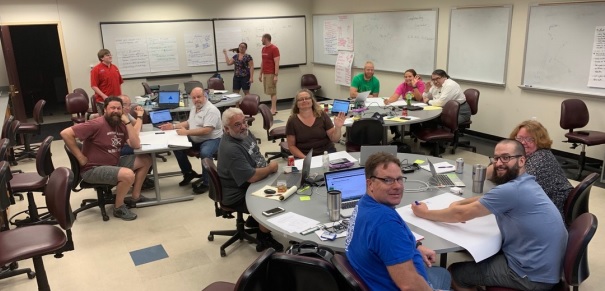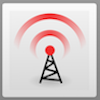Friday Flyer - October 25, 2019

Spotlight on the Southern Methodist University QuarkNet Center
The SMU QuarkNet teachers met on campus for their annual workshop on July 29-31. The first two days featured a neutrino data workshop that included the analysis of MINERvA masterclass data along with other neutrino-related classroom activities. Thomas Coan provided an introductory lecture on neutrinos and their detection, and teachers had the opportunity to visit the SMU NOvA experiment's control room, one of 15 NOvA control rooms located around the world. On the third day of the workshop, teachers tried out and provided feedback on a new electric field mapping lab led by SMU Professor Jingbo Ye. Teachers also shared classroom activities and project ideas with each other, including one about a weather balloon project and another on the use of 3D printing to enhance student interest in the classroom.
This year's workshop was part of the capstone experience for those completing SMU's Master Physics Teacher Certificate. The SMU QuarkNet Center is located in Dallas, Texas and is led by Simon Dalley.


News from QuarkNet Central
Are your students thinking about the Beamline for Schools (BL4S) competition yet? Maybe they should! BL4S is a chance for a team of students to devise and propose an experiment in an actual accelerator beamline, and pre-registration has begun. This year, each of the winning teams goes to one of two labs: DESY in Hamburg, Germany or LNF in Frascati, Italy. Proposals are due March 31, 2020. Learn more at the BL4S website!
Registration for International Masterclasses 2020 will begin next Friday, November 1.
- QuarkNet and Fermilab support CMS, ATLAS Z, and MINERvA neutrino masterclasses, with a preliminary schedule available. (We are also piloting a MicroBooNE masterclass; please let Ken or Shane know directly if you are interested.)
- For masterclass videoconferences connecting to CERN or KEK, please see the latest IMC 2020 circular, hot off the virtual press!
One reminder: International Cosmic Day is Wednesday, November 6, 2019. Register now if you haven't already!

Physics Experiment Roundup
Last week's FF acknowledged the fact that DUNE is truly an international collaboration. This week we provide another example of this fact; ARAPUCA: Let there be light traps highlights some of the Latin American contributions in creating photon detectors for DUNE. As we approach the end of this decade, Gizmodo looks back at the last ten years of particle physics research and considers what the next ten years will bring.

Resources
Halloween is coming up next week, which means Dark Matter Day is just around the corner. Use this event finder to locate a Dark Matter Day event near you! Halloween decorations often include spider webs. Learn more about the amazing properties of spider silk from today's episode of Science Friday.
Just how big is the universe? How do we know? Don Lincoln explores answering these questions in his latest YouTube video. Learn how Russian physicist Alexander Friedmann corrected Einstein in this video from Minute Physics.

Just for Fun
Fun this week is provided by our trusty friends at xkcd, including one on milkfat percentages, one on faculty-to-staff ratios, and one on the many uses of your "phone."
QuarkNet Staff:
Mark Adams: adams@fnal.gov
Ken Cecire: kcecire@nd.edu
Shane Wood: swood5@nd.edu
